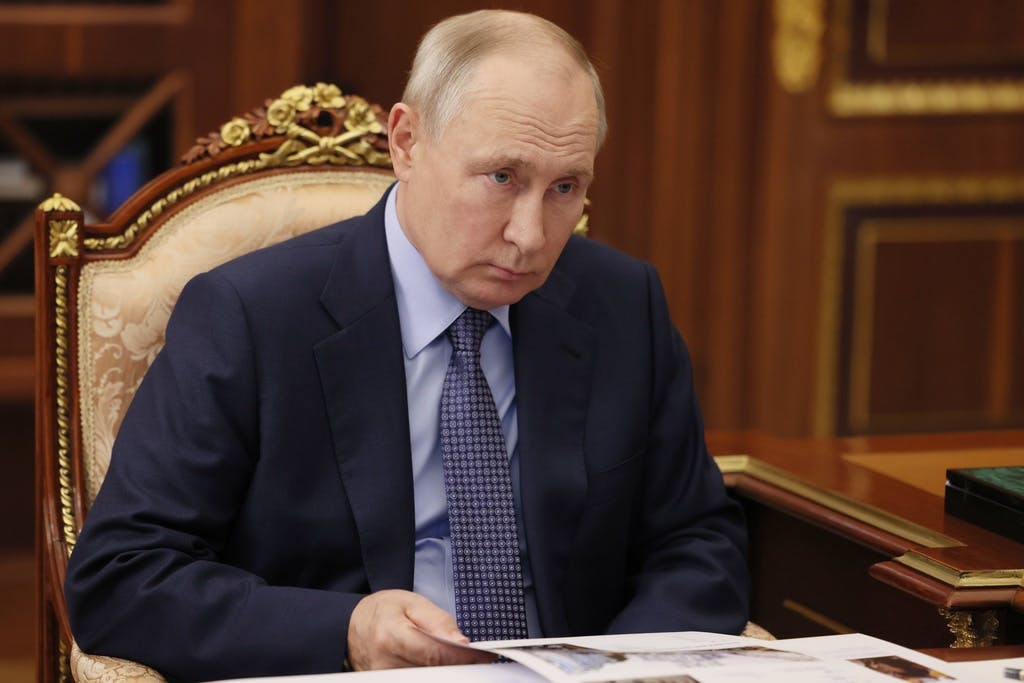Northern Exposure: Could Finland — Warmed by Climate Change — Prove To Be a ‘Perfect Place’ for Russia To Test NATO’s Mettle?
What would NATO be talking about when it sounds an alarm on climate change as a ‘threat multiplier’?

Could President Putin have his sights set on making trouble for Europe by way of the frigid northern climes? Some conventional wisdom has it that after his clumsy warmongering in Ukraine, the Russ leader might seek to give an armed elbow to one or more of the Baltic states. There are murmurs, though, that future clashes are more likely to start somewhere north of the Finland Station.
Here’s looking at you, Helsinki.
This speculation comes as several European defense ministers and the head of the British army warn of the risk of a direct confrontation between the North Atlantic Treaty Organization and Russia within the next few years. As the newest member of the North Atlantic Treaty, Finland is in a unique position and not just geographically.
As the easternmost of the Nordic nations, Finland’s proximity to Russia is inescapable, and those on both sides of the border are aware of that. The West in general is more attuned to the Kremlin’s predatory behavior than at any time in recent memory, but in Finland the antennae that were always out are now extending even higher.
That may be why the Finnish press was quick to pick up on remarks recently made by a military analyst with the Royal Danish Defense College, Anders Puck Nielsen. As first reported by the Finnish newspaper Iltalehti, Mr. Nielsen thinks that Finland — in part if not in whole — could be a likely future target for Mr. Putin.
Mr. Nielsen is by no means alone in thinking that Russia’s grand plan is to break up NATO. What is new, though, is the way he sees such an attempt most likely playing out. The most logical thing to do from Moscow’s viewpoint would be to prod the alliance over Article 5, the collective defense obligation.
Russia could someday seek to carry out a limited military operation against a NATO member that would activate Article 5, but it could also calculate that it would be of such a scope that the fear of a wider war would make at least some NATO countries back down.
By this reckoning an attack on the Baltics or even Poland, for that matter, would simply bring into the war too many countries for Russia to handle, making an attack on northern Finland a more viable option for Mad Vlad.
In Mr. Nielsen’s estimation, because the northern Finnish region of Lapland is so remote, only two countries would be involved in an initial confrontation: Finland and Russia. Furthermore, unlike the densely populated Baltics, Lapland is largely empty, meaning the Russians could calibrate any escalation with greater ease — at least on paper.
Mr. Putin could make the bet that if NATO’s major military powers fail to react to an attack on a smaller member country like Finland, it would give Russia a freer hand to seize additional territories — perhaps more than theoretically.
Then again, too, now that Finland is a member of the North Atlantic Treaty, with Sweden next in line, there is a certain deterrence factor taking shape. Periodic peeks at Russia’s domestic propaganda indicate that the Kremlin is slowly internalizing new geopolitical realities. That, though, would not be reason enough for Western military planners to rest on their laurels.
That’s because geological realities are shifting, too. Last month, and unusually for some observers, NATO singled out climate change as a security threat. Specifically, climate change was called a threat multiplier that “affects NATO security, operations and missions both in the Euro-Atlantic area and in the Alliance’s broader neighborhood. It makes it harder for militaries to carry out their tasks.”
That might be balderdash, but welcome to Europe.
In addition to a front-row seat to Finland, Russia has a continent-sized open window on the Arctic, which is said to contain some of the world’s biggest untapped fossil fuel reserves. According to scientists at NASA, the Arctic ice sheet is retreating. It doesn’t take a geophysicist to understand that the less ice there is in the polar regions, the easier it becomes to explore and ultimately extract natural resources.
A significant percentage of Russian oil and gas reserves are thought to be within the Arctic Circle, but there are also NATO member countries with competing claims to some of those resources. In a sense, there is already a frozen conflict at the top of the world. Can it say iced up forever?
Global warming or not, Russia is already expanding its network of Arctic military bases. One of them, at Olenegorsk, is less than a 200-mile drive across the tundra from the border with Finland.

